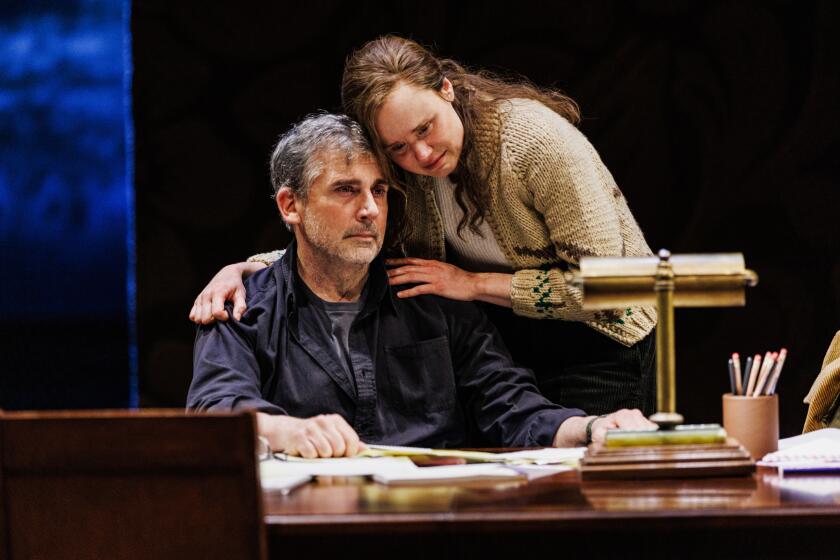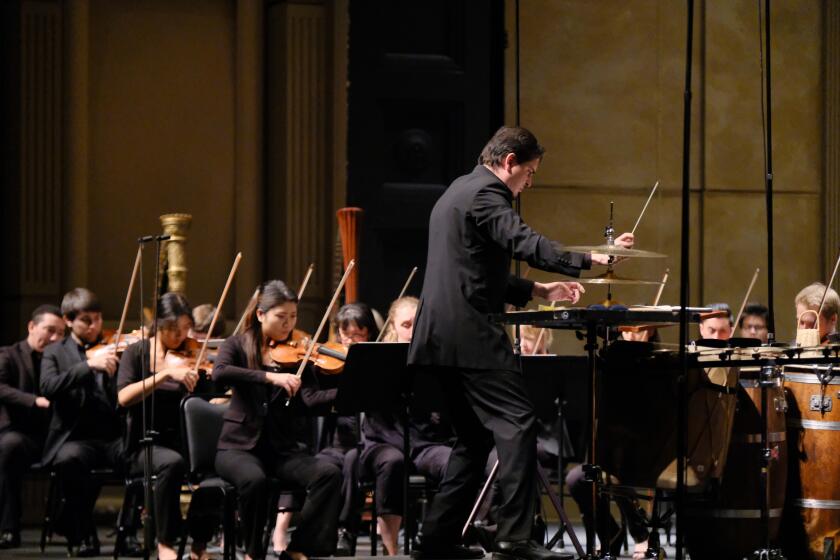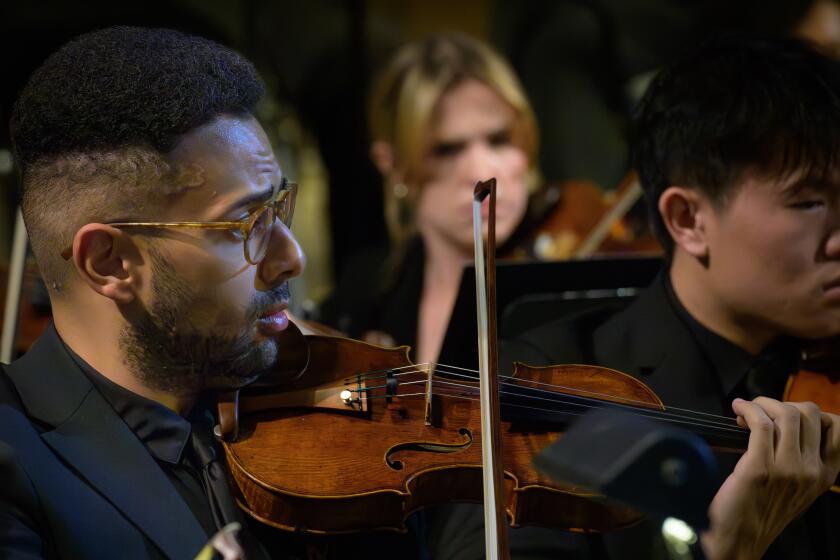(S)light Turbulence
Mediocrity in public art is nothing new. But with the Democratic convention in town and civic boosters proclaiming Los Angeles’ cultural explosion, it’s hard to blame Angelenos for a moment of naive optimism.
The 30 illuminated columns that form the new gateway to Los Angeles International Airport should deflate those hopes in an instant.
Designed by Los Angeles architect Ted Tokio Tanaka, the towering glass columns form a ring at the main entrance to the airport--marked by a 32-foot-tall LAX sign--and then extend out along Century Boulevard. The project was rushed through the city’s design review process and into construction in the spring in preparation for the convention. Part of a $112-million airport beautification plan, it is intended as a new icon for the city. But the project doesn’t attain the level of true art. An architectural one-liner, it works better as decorative street lighting than as an aesthetic object or thoughtful cultural commentary.
Visitors arriving in L.A. will first glimpse the columns as they head out of the airport toward the 405 and 105 freeways. One hundred and 10 feet high, the columns are scattered through the elevated roadways like glowing toy light swords. But as you get closer, their scale becomes more monumental. The forms tower above you, and you momentarily feel disoriented, as if you were on the set of a gaudy sci-fi picture.
What prevents the pylons from becoming a cheap special effects gimmick, however, is the way light transforms their appearance throughout the day. Seen with the sun rising behind them, their frosted glass surfaces are virtually transparent, and their interior steel structure becomes suddenly visible. The glass cladding--made of dozens of curved panels supported on steel pins--seems as if it were about to burst apart. At midday, on the other hand, the pylons turn opaque and solid, emitting a soft yellow glow. The transformation is subtle but instantaneous, and triggers mild curiosity.
That ephemeral quality is lost at night, when the pylons are transformed into great big glowing beacons. Illuminated from the inside with computerized theater lights, they can be programmed for an infinite range of colors and hues. The question here is how the lighting designer, Paul Tzanetopoulos, will exploit that range. So far, the shifting lights--changing from red, white and blue to soft pinks and greens--have had a surprisingly eerie but hokey effect, evoking images of cars careening through a giant pinball machine.
A bigger problem is the gateway’s layout. The organization of the pylons at the airport’s entrance is impossible to read as you swerve through airport traffic. What’s more, by clustering half of the pylons together in a ring, the design misses an obvious and potentially more powerful metaphor: the long string of landing lights that are among an airport’s most thrilling features.
Which is why the columns along Century Boulevard are more effective. Set amid healthy new Canary Island and Mexican fan palms that line the boulevard’s median, the columns conceptually form a part of the elaborate freeway system that flows through the city, binding it together. But here, too, the architects make subtle misjudgments, getting needlessly fussy.
As you exit the airport down Century Boulevard, the columns get shorter, dropping from 60 feet high to a mere 25. The idea is to reinforce the sense that you have just landed (going toward the airport, the idea is to simulate takeoff), but the execution is too literal, and the change in scale saps the pylons of what little elegance they have. Just before you get to the freeway, they seem to fizzle out with a whimper.
What might have helped the design is a deeper understanding of the forms and precedents that the pylons evoke. Their abstracted shape and lack of any real function recall many Postmodern designs of the 1980s, when classicism was reduced to a collection of symbols, or even the fascist designs ofthe ‘20s and ‘30s, where those same forms were used as emblems of historical authority. Here, the lightness of the glass structure gives them a gentler aura. But rather than consciously play against that earlier symbolism, the design decisions seem simplistic. The gateway has the glib appeal of advertising rather than the impact of thoughtful design. We’ve been given some big, pretty lamp posts--not the worst use of civic funds, but not the best either.
More to Read
The biggest entertainment stories
Get our big stories about Hollywood, film, television, music, arts, culture and more right in your inbox as soon as they publish.
You may occasionally receive promotional content from the Los Angeles Times.






